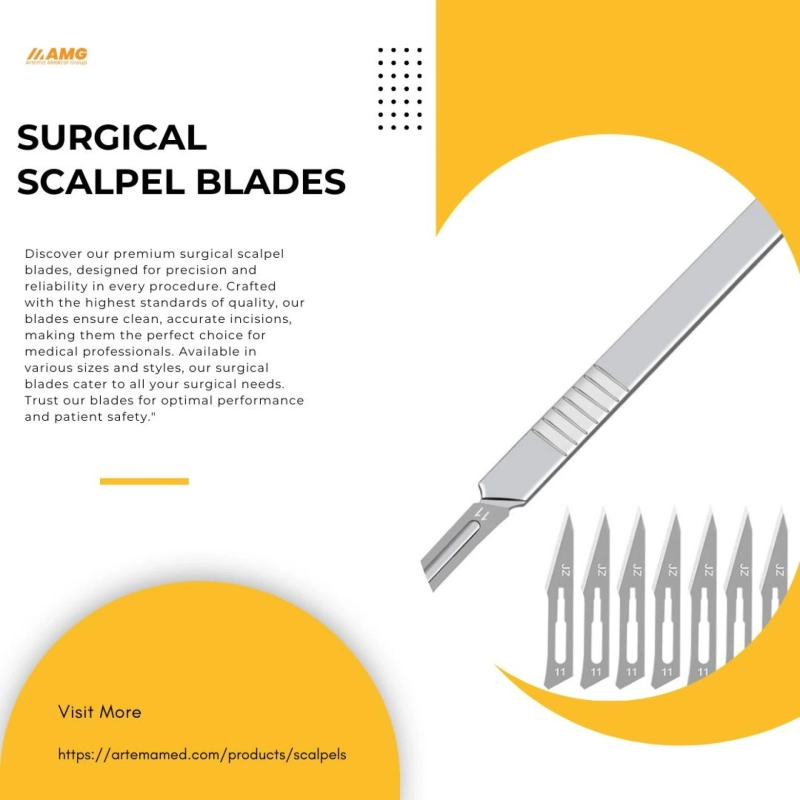The image of a scalpel is practically synonymous with surgery itself. But within the sterile environment of the operating room, the true star of the show is often overlooked: the surgical scalpel blades. These seemingly simple tools play a far more critical role than meets the eye.
Beyond the Cut: Precision and Minimized Trauma
The primary function of a surgical scalpel blade goes beyond just making an incision. It\'s about achieving precise cuts with minimal damage to surrounding tissues. A dull or poorly chosen blade can tear delicate structures, leading to:
- Increased bleeding
- Slower healing times
- Potential complications
High-quality, sharp blades ensure clean cuts, minimizing tissue disruption and promoting optimal healing. This translates to quicker recovery times and better outcomes for patients.
A Blade for Every Need: Versatility in Design
Surgical scalpel blades are not a one-size-fits-all solution. They come in a wide variety, each meticulously designed for a specific surgical task. The blade\'s shape, size, and sharpness all influence its function. Here are some examples:
- #10 blade: This broad-bellied blade excels at making longer incisions in the skin.
- #11 blade: A smaller version of the #10, ideal for shorter skin incisions requiring a wider opening.
- #15 blade: A favorite among dermatologists, featuring a pointed tip for precise cuts in delicate areas.
- #1 Bard-Parker blade: This sharply pointed blade excels at puncturing tissues and making small incisions, commonly used in vascular surgery.
This design diversity allows surgeons to choose the perfect tool for each stage of the procedure, maximizing precision and control throughout the operation.
Beyond Material: A Matter of Performance
The material used in surgical scalpel blades significantly impacts their performance. Modern blades are typically crafted from high-quality stainless steel or carbon steel for a sharp and durable edge. However, advancements continue:
- Diamond or ceramic coatings: These coatings offer exceptional sharpness and longevity for specific applications.
- Research into new materials: The ongoing pursuit of even greater precision and efficiency may lead to the development of blades with self-healing properties or crafted from entirely new materials.
The right material choice ensures the blade maintains optimal sharpness throughout the surgery, minimizing the need for replacements and maximizing efficiency within the operating room.
The Art of the Scalpel: Informed Selection
Selecting the appropriate surgical scalpel blade is more than just grabbing the sharpest option. Surgeons consider various factors:
- The depth and location of the incision
- The type of tissue being cut
- The desired level of bleeding control
The right blade choice minimizes tissue damage, reduces blood loss, and ultimately leads to a smoother surgery and faster recovery for the patient. This highlights the crucial role of surgical scalpel blades not just as cutting tools, but as instruments demanding informed selection and skilled use.
Beyond the Operating Room: A Wider Reach
Surgical scalpel blades are not confined to the sterile confines of the operating room. Their precise cutting ability makes them valuable tools in various fields:
- Dermatology: For performing biopsies and other delicate procedures on the skin.
- Autopsy Pathology: For dissecting tissue samples during autopsies.
- Biological Research: For precise manipulation and dissection of tissues in research labs.
A Legacy of Innovation: A Look Forward
The critical role of surgical scalpel blades is evident throughout medical history. Their evolution reflects the constant pursuit of minimizing surgical trauma while maximizing patient outcomes. From the basic stone tools of the past to the high-tech blades of today, these indispensable instruments have played a vital role in advancing surgical techniques. As medical science continues to evolve, so too will the design and functionality of surgical scalpel blades, ensuring even greater precision and efficiency in the future of surgery. For more detail visit our website Artema medical.


